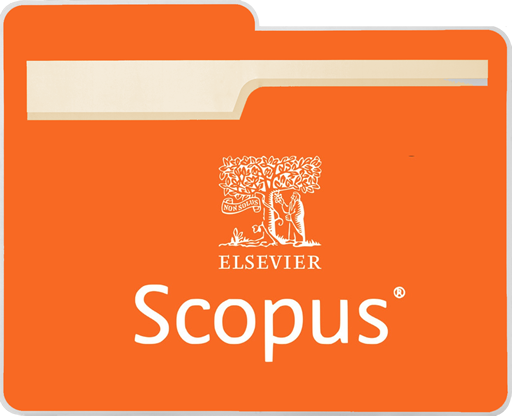Işık Üniversitesi Kurumsal Akademik Bellek
Işık Üniversitesi tarafından doğrudan ve dolaylı olarak yayınlanan; kitap, makale, tez, bildiri, rapor, araştırma verisi gibi tüm akademik kaynakları uluslararası standartlarda dijital ortamda depolar, Üniversitenin akademik performansını izlemeye aracılık eder, kaynakları uzun süreli saklar ve telif haklarına uygun olarak Açık Erişime sunar.

Güncel Gönderiler
The relationship between conflict management styles used by nurse managers in psychiatric clinics and the stress level of their subordinates
(Kare Publishing, 2025-06-30) Çabuk, Merve; Acuner, Deniz
Objectives: This study aimed to determine the relationship between the opinions of nurses working in psychiatric wards regarding their managers' conflict management styles and their self-perceived stress levels. Methods: This was a descriptive, comparative, and correlational study. The population consisted of 580 nurses working in psychiatric clinics of public and private hospitals in Istanbul, and 199 nurses were included in the sample. The "Personal Information Form," "Rahim Organizational Conflict Inventory–II (ROCI-II) Form A," and "Perceived Stress Scale" were used for data collection. Data were analyzed using frequency and percentage distributions, the Kruskal–Wallis test, Spearman correlation analysis, and the Mann–Whitney U test. Results: The participants’ mean scores on the Conflict Management Scale were as follows: integration subscale 2.50±0.90; obliging subscale 3.03±0.74; dominating subscale 2.92±0.85; avoiding subscale 2.98±0.66; and compromising subscale 2.61±0.83. The mean score of the Perceived Stress Scale was 13.78±4.74. The mean score for the perceived stress subdimension was 4.49±2.04, and for the perceived coping subdimension was 9.30±3.45. A statistically significant, weak positive correlation was found between the perceived stress subdimension and the dominating subscale, while a weak negative correlation was observed with the compromising and integration subdimensions. A weak negative correlation was also found between the perceived coping subdimension and the integration, obliging, and compromising subdimensions. Conclusion: According to the nurses, their managers most frequently use obliging, avoiding, dominating, compromising, and integration styles, respectively, in conflict management. As managers’ use of compromising and integration styles increases, the nurses’ perceived stress levels decrease.
A novel approach to non-invasive intracranial pressure wave monitoring: a pilot healthy brain study
(Multidisciplinary Digital Publishing Institute (MDPI), 2025-06-28) Karaliunas, Andrius; Bartusis, Laimonas; Krakauskaite, Solventa; Chaleckas, Edvinas; Deimantavicius, Mantas; Hamarat, Yasin; Petkus, Vytautas; Stulge, Toma; Ratkunas, Vytenis; Çelikkaya, Güven; Januleviciene, Ingrida; Ragauskas, Arminas
Intracranial pressure (ICP) pulse wave morphology, including the ratios of the three characteristic peaks (P1, P2, and P3), offers valuable insights into intracranial dynamics and brain compliance. Traditional invasive methods for ICP pulse wave monitoring pose significant risks, highlighting the need for non-invasive alternatives. This pilot study investigates a novel non-invasive method for monitoring ICP pulse waves through closed eyelids, using a specially designed, liquid-filled, fully passive sensor system named ‘Archimedes 02’. To our knowledge, this is the first technological approach that enables the non-invasive monitoring of ICP pulse waveforms via closed eyelids. This study involved 10 healthy volunteers, aged 26–39 years, who underwent resting-state non-invasive ICP pulse wave monitoring sessions using the ‘Archimedes 02’ device while in the supine position. The recorded signals were processed to extract pulse waves and evaluate their morphological characteristics. The results indicated successful detection of pressure pulse waves, showing the expected three peaks (P1, P2, and P3) in all subjects. The calculated P2/P1 ratios were 0.762 (SD = ±0.229) for the left eye and 0.808 (SD = ±0.310) for the right eye, suggesting normal intracranial compliance across the cohort, despite variations observed in some individuals. Physiological tests—the Valsalva maneuver and the Queckenstedt test, both performed in the supine position—induced statistically significant increases in the P2/P1 and P3/P1 ratios, supporting the notion that non-invasively recorded pressure pulse waves, measured through closed eyelids, reflect intracranial volume and pressure dynamics. Additionally, a transient hypoemic/hyperemic response test performed in the upright position induced signal changes in pressure recordings from the ‘Archimedes 02’ sensor that were consistent with intact cerebral blood flow autoregulation, aligning with established physiological principles. These findings indicate that ICP pulse waves and their dynamic changes can be monitored non-invasively through closed eyelids, offering a potential method for brain monitoring in patients for whom invasive procedures are not feasible.
Pre-occupancy evaluation of wayfinding signage using immersive virtual reality
(Elsevier Ltd, 2025-07) Karadağ, Derya
This study explores how alternative wayfinding signage designs influence user experience within immersive virtual environments during early-stage architectural evaluation. A 3D model of a university building's ground floor was developed and experienced through head-mounted displays (HMDs) to simulate spatial conditions. Eighteen participants completed structured navigation tasks in two signage settings, followed by post-task surveys and semi-structured interviews. Quantitative data—task completion times and circulation paths—were analysed alongside thematic evaluations of user feedback. Findings reveal that signage design affects spatial perception, navigational efficiency, and user satisfaction. The study shows that early-stage VR testing supports user-informed design decisions, especially for evaluating signage-based spatial strategies and related user experience considerations. VR emerges as a practical tool for integrating user-centred feedback into the pre-occupancy phase of spatial planning.
Modeling the effects of soil improvement on train induced random ground-borne vibrations
(Isik University, 2025-05-01) Bayındır, Cihan; Kesten, Ali Sercan; Etminan, Ehsan
Ground-borne vibrations by railway trains are generated at the rail-wheel interface due to the passage of wheels and due to irregularities of wheels and tracks. These vibrations need to be predicted and controlled during the design and service of the railway for the safety and serviceability of the railway to avoid possible vibrationinduced problems such as settlement and differential settlement due to their compaction effect, liquefaction, and discomfort of people. While such railway vibrations are modeled by different techniques, only a few studies do exist to analyze them in the case of soilimproved conditions. In this study, we propose a mathematical framework to study the effects of soil improvement on the ground-borne vibrations induced by railway trains. We use an experimentally calibrated model that utilizes the evolutionary random process approach to model the time-varying transfer functions between the axles of the train and the fixed observation point. The railway is modeled as a Winkler foundation with rail pads and corresponding transfer functions are used. The target area of this study is the Emin¨on¨u-Alibeyk¨oy Tramway Line in ˙Istanbul, which is under construction. Due to poor soil conditions at the specific stations along the proposed tramway route, soil improvement by the application of geo-synthetics is performed at the site and taken into account in our model. The improvement in soil conditions is modeled as increased vertical soil stiffness in the Winkler foundation of the evolutionary random process model. To model the various tramway loading conditions, both the 5-axle and 6-axle tramway configurations with non-uniform axle spacing are considered. We show that by increasing the vertical soil stiffness ksb, the vibration velocity and acceleration levels can be reduced significantly. By implementing the model proposed, we present the reduction of the vibration velocity and acceleration levels as the functions of soil improvement parameters and discuss our findings and the applicability of the model.
Enhancing real estate listings through image classification and enhancement: a comparative study
(Multidisciplinary Digital Publishing Institute (MDPI), 2025-05-22) Küp, Eyüp Tolunay; Sözdinler, Melih; Işık, Ali Hakan; Doksanbir, Yalçın; Akpınar, Gökhan
We extended real estate property listings on the online prop-tech platform. On the platform, the images were classified into the specified classes according to quality criteria. The necessary interventions were made by measuring the platform’s appropriateness level and increasing the advertisements’ visual appeal. A dataset of 3000 labeled images was utilized to compare different image classification models, including convolutional neural networks (CNNs), VGG16, residual networks (ResNets), and the LLaVA large language model (LLM). Each model’s performance and benchmark results were measured to identify the most effective method. In addition, the classification pipeline was expanded using image enhancement with contrastive unsupervised representation learning (CURL). This method assessed the impact of improved image quality on classification accuracy and the overall attractiveness of property listings. For each classification model, the performance was evaluated in binary conditions, with and without the application of CURL. The results showed that applying image enhancement with CURL enhances image quality and improves classification performance, particularly in models such as CNN and ResNet. The study results enable a better visual representation of real estate properties, resulting in higher-quality and engaging user listings. They also underscore the importance of combining advanced image processing techniques with classification models to optimize image presentation and categorization in the real estate industry. The extended platform offers information on the role of machine learning models and image enhancement methods in technology for the real estate industry. Also, an alternative solution that can be integrated into intelligent listing systems is proposed in this study to improve user experience and information accuracy. The platform proves that artificial intelligence and machine learning can be integrated for cloud-distributed services, paving the way for future innovations in the real estate sector and intelligent marketplace platforms.
























